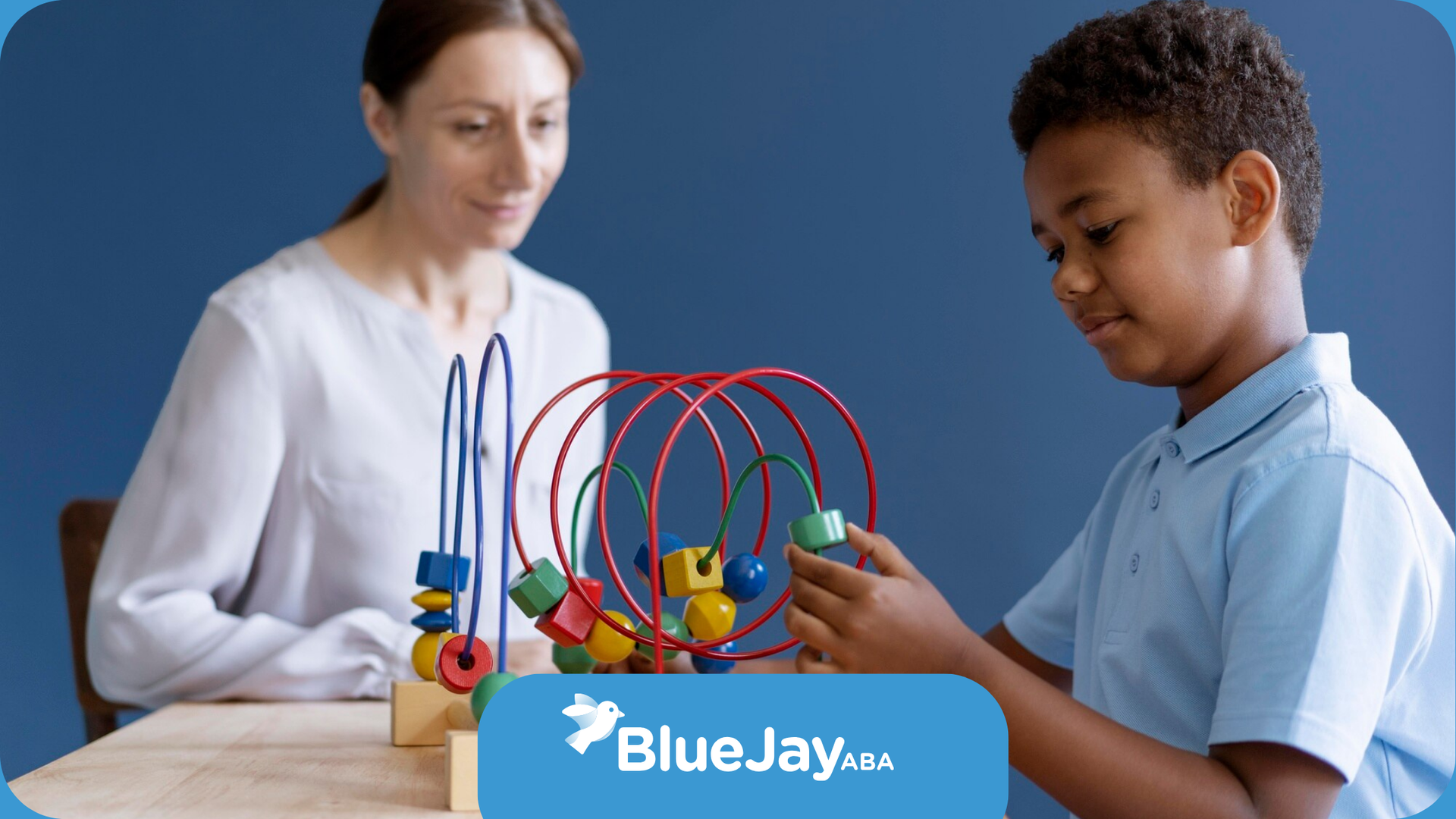Early Signs of Regressive Autism Spectrum
Regressive autism is a type of autism spectrum disorder (ASD). It usually begins with normal development, but then the child may lose skills. This regression often happens in the second year of life. Signs include a drop in language, social interaction, and communication skills. The exact reasons for this are still being studied. However, knowing more about this can help with early help and support.
Understanding Regressive Autism Spectrum Disorder
Regressive autism, also known as late-onset autism or autistic regression, can be very challenging. Children who seem to develop normally in their early months may suddenly lose skills. This usually happens in language and social interaction.
For families, watching their child lose abilities can be very painful. It is important to tell regressive autism apart from other types of autism. This requires careful checking and advice from healthcare professionals. They can help guide the right interventions.
Defining Regressive Autism in Children
Regressive autism is a special kind found within the wider autism spectrum. It is different from early-onset autism, where delays in development show up right from infancy. With regressive autism, children seem to develop normally for the first two years. Then, they start to lose skills they had before. This can confuse families, as it’s hard to understand why a child who was progressing suddenly regresses.
The main sign of this condition is the clear loss of skills. Kids who once babbled, waved, or responded to their names may stop those behaviors all of a sudden. Often, the loss of language is the biggest impact, with children losing words or not interacting in conversations.
This regression can happen slowly or really fast, which makes it tricky to spot and understand. Researchers are looking closely at what causes regressive autism. It's very important to notice the early signs and act quickly to help the child.
The Distinction Between Early-Onset and Late-Onset Autism
Understanding autism spectrum disorder means knowing the difference between early-onset and late-onset autism.
Early-onset autism shows developmental delays in a child's early life, often before they turn three. Parents may notice differences in how their child interacts, communicates, and behaves compared to other kids the same age.
On the other hand, late regression, also known as regressive autism, begins with normal development, followed by a loss of skills. This can happen between 15 and 30 months of age and may include losing speech or the ability to engage socially, along with other skills they had already learned.
The differences between these two types go beyond when they start. Both forms show the main traits of ASD, but families often feel the effects of late regression more deeply due to the previous period of normal development.
Identifying the Early Signs of Regressive Autism
The first signs of regressive autism can be mild and easy to miss. Still, paying attention to changes in your child's behavior can help you get help on time. Signs may include less eye contact, not responding when you call their name, and repeating words often.
Also, a drop in social interactions, like not wanting to play with friends or share happy moments, should be a warning sign. If you notice any of these behaviors, it's important to talk to your pediatrician or a specialist in child development.
Communication Skills and Regressive Autism
One big worry about regressive autism is how it can hurt communication skills. Children who were learning to talk like other kids may suddenly lose their language skills. This can show up as fewer words they can use, stopping their babbling or not talking at all.
Other types of communication can also be affected. Kids might stop using gestures like pointing or waving. They may not try to share what they need or want. This loss of language can make children feel very alone and make it hard for them to connect with the world around them.
It's important to understand how communication skills change. This helps in creating the right speech therapy plans and finding new ways for kids to communicate. Giving these children ways to express themselves, even in different forms, is vital for their social and emotional health.
Social Interaction Changes in Regressive Autism
A key sign of regressive autism is a big change in how a child interacts socially. You can see social regression when children pull away from connecting with others. They may lose interest in interacting with parents, siblings, or friends. They might stop starting or responding to attempts to play or talk, and instead, they choose to play alone.
The way they show nonverbal communication, like eye contact, facial expressions, and gestures, can go down a lot. This makes it hard for them to understand others and share their own feelings. As a result, they might feel frustrated, misunderstood, and isolated in social settings.
It is very important to have early help that focuses on improving social skills and encouraging good social interactions. Therapies such as ABA therapy can assist children in re-learning these skills and finding ways to cope in social situations.
Behavioral Signs of Regressive Autism in Toddlers
Recognizing the signs of regressive autism in young children is very important for getting early help. Parents might see their child changing in behavior. This change often includes a loss of skills they used to have. Repetitive actions, like hand-flapping, spinning, or lining up toys, may stand out more.
Also, young children with signs of regressive autism might be very sensitive to things around them. They could get upset by loud noises, dislike certain textures, or be fascinated by things like lights or spinning objects. Changes in sleep, eating, or bowel habits can also point to a potential problem.
It's key to understand that these behavior changes are not done on purpose or to be defiant. They are a result of the way the brain works with autism. Creating a safe and structured space can help children feel more secure as they deal with these challenges.
Age of Onset and Risk Factors for Regressive Autism
Regressive autism usually appears when a child is between 15 and 30 months of age. The average age when it starts is around 19 months. This is often during an important time when children quickly learn language and social skills. Because of this, researchers are looking into how growth milestones might connect with the start of regression.
We still do not fully understand what causes regressive autism. Studies show there may be a mix of genetic factors and environmental effects. Knowing more about these risks is important. It can help us find ways to identify autism early and create better support.
Typical Age Range for the Onset of Symptoms
The start of regressive autism can happen within a specific period. This often surprises parents after they see normal development in their child. The second year of life, between 12 and 36 months of age, is a key time when early signs of autism, especially regression, may show up.
Around 18 months of age, many kids talk more and improve their language skills. However, children with regressive autism might stop showing this growth or even move backward. Parents may see their child using fewer words, having trouble making sentences, or going back to babbling.
These changes in development can be small and easy to miss. That's why spotting them early is important for getting the best help. If you are worried about your child's development during this important time, it is crucial to talk to a healthcare professional for a thorough evaluation.
Potential Risk Factors Associated with Regressive Autism
The exact causes of regressive autism are still being studied. However, some risk factors have been found. Genetics are important, as children with a family history of autism are more likely to have it. Environmental factors also seem to play a part in these causes.
Some studies hint at a link between certain environmental exposures during pregnancy and a higher risk of autism. These exposures may include infections or some medications. Still, more clear evidence is needed. Research also looks at possible connections with issues in the immune system, metabolic disorders, and imbalances in gut bacteria.
The search for clear answers goes on, showing the need for better and broader autism research. Knowing these risk factors is key. It can help in creating ways to prevent autism, improve early diagnosis, and enhance treatment for children with regressive autism.
The Diagnostic Journey for Regressive Autism
Diagnosing regressive autism needs a detailed approach. This includes looking at a child's growth history, watching their behavior, and using special tests. Unlike other health issues, there are no clear medical tests for autism spectrum disorder. It depends a lot on healthcare experts who are skilled at spotting its subtle signs.
The process usually starts when parents notice big changes in their child's behavior or development. It’s important to talk to a pediatrician or a family doctor first. They can decide if the child should see specialists, like developmental pediatricians or child psychologists.
Screening Tools and Initial Assessments
Detecting regressive autism involves several steps and is done by skilled healthcare professionals. The process begins by collecting the child's developmental history. This includes any concerns mentioned by parents or caregivers. Watching the child’s behavior in a clinic gives important clues about their social interaction, communication, and play skills.
Doctors often use special tools, like the Modified Checklist for Autism in Toddlers (M-CHAT), to find early signs of autism spectrum disorder (ASD). These tools help spot signs that may need more examination. It is important to understand that these screenings do not provide a diagnosis. They simply point to the need for further assessment.
If the early checks show signs of developmental regression or autism spectrum disorder, doctors usually refer families to specialists. These might include developmental pediatricians, child psychologists, or neurologists. These experts perform detailed evaluations that focus on specific areas of development that could be affected by regressive autism.
Comprehensive Diagnostic Evaluations for ASD
Comprehensive evaluations for autism spectrum disorder (ASD) are very important. They help find out the unique needs of each child. Many professionals work together on these evaluations. This team includes developmental pediatricians, child psychologists, speech-language pathologists, and occupational therapists.
The evaluation looks at much more than just giving a child a label. It focuses on the child's thinking skills, language development, social communication, how they process sensory information, and their everyday skills. This in-depth approach helps create a personalized plan for help.
Parents talk a lot about their child's development. They share any worries about skill loss or strange behaviors. Watching how the child interacts with their caregivers and surroundings is also important. This gives helpful information about their social-emotional skills and communication styles.
Intervention Strategies for Regressive Autism
Timely and personalized help is very important for children with regressive autism. It helps them recover skills they lost and supports their overall growth. A varied approach that meets each child’s needs and strengths works best.
Most interventions aim to improve communication, boost social interaction, help with sensory sensitivities, and manage behavior. Early intervention programs, special therapies, and educational support are key to unlocking a child's full potential.
Applied Behavior Analysis (ABA) and Its Effectiveness
Applied Behavior Analysis (ABA) is a common method to help people with autism spectrum disorder. It works by understanding and improving behaviors like social skills and communication. Recent studies show that ABA can help autistic children learn important skills. This method breaks tasks into smaller steps and uses positive reinforcement to encourage learning in those with regressive autism. ABA programs are designed to meet each child's needs. They can be very helpful in dealing with developmental delays and supporting progress in different areas of life.
Speech Therapy Approaches for Communication Challenges
Communication issues are common in regressive autism. These problems can cause a lot of stress for children and their families. Speech therapy, from a qualified speech pathologist, is important in solving these issues. It helps children regain language skills or find new ways to communicate.
A good speech therapy program may use different methods based on the child's needs. Some children might work on getting back lost words, speaking clearly, and talking more on their own. Others may learn sign language, use picture systems, or try assistive technology devices.
The speech pathologist teams up with the child and their family. They create effective communication strategies that fit into daily routines. Regular practice, positive feedback, and a caring setting are essential for improving communication.
Occupational Therapy for Sensory Integration Issues
Sensory processing differences are often seen in children with regressive autism. This can affect how they take part in daily activities. Occupational therapy is important. It focuses on sensory integration and helps these children develop ways to deal with sensory input. It also improves their motor skills.
Occupational therapists make special sensory diets. These are sets of activities that help a child's sensory system. For some kids, this may include uses like weighted blankets or tight hugs for deep pressure. Others may need calming sensory spaces or regular movement breaks in their days.
In addition to sensory problems, occupational therapists help kids improve their fine motor skills. These include skills like gripping, writing, and using utensils. They also work on gross motor skills, which involve balance, coordination, and understanding body movements. Improving these skills helps children be more independent and confident in their physical activities.
Supporting Families and Caregivers of Children with Regressive Autism
Families and caregivers of children with regressive autism have special challenges. They need strong support and understanding. Watching their child go through regression can bring up many emotions. This can be tough, so taking care of themselves is very important. They should look for help outside of their home.
Meeting other families in similar situations can help create a sense of community. Support groups and online forums are good places to share coping tips, resources, and comforting stories. Using respite care services can give caregivers a break. This allows them time to rest and focus on their own health.
Resources and Support Networks for Parents
Navigating regressive autism can be tough for parents. Luckily, there are many resources and support groups that can help. Organizations like Autism Speaks and the Autism Society of America provide lots of helpful information. They offer educational materials, online forums, and links to local support groups.
These groups also fight for the rights of people with autism and their families. They aim to increase awareness and acceptance in communities. Meeting other parents who have kids on the autism spectrum can be very helpful.
Support groups allow parents to share experiences and coping tips. They help parents feel comfort knowing they are not alone. Online forums and social media groups let parents connect with others no matter where they live. This creates a sense of belonging and shared understanding.
Coping Strategies and Self-Care for Caregivers
Caring for a child with regressive autism can be very hard, both emotionally and physically. It's important for caregivers to take care of themselves. This helps them give the best support to their loved ones. Using coping strategies and practicing self-care is necessary. It helps maintain their well-being.
Finding time to relax and do things you enjoy is important. Activities like reading, listening to music, spending time in nature, or doing hobbies can help. If you need support, don’t hesitate to reach out to family, friends, or professionals. Talking to a therapist or counselor can provide a safe place to express your feelings and learn how to cope with the challenges you face.
Remember, you are not alone in this situation. There are many resources and support networks available to help caregivers. Taking care of yourself is important. It ensures you can provide care that is sustainable and compassionate.
Conclusion
Regressive Autism Spectrum Disorder brings special challenges. The symptoms can start slowly, making it hard to notice. Finding these issues early is very important. It helps with treatment and support on time.
It is key to understand how regressive autism is different from other types of autism spectrum disorder. Early signs include problems with communication, changes in social interaction, and behavior changes. Spotting these signs can help create good treatment plans.
Getting advice from a professional is important. Useful therapies include ABA and speech therapy. Joining support groups is another helpful step in handling regressive autism. Remember, early intervention and support from family are essential for the well-being of children with this condition.
For more information and help, check out available resources and connect with supportive communities.
Frequently Asked Questions
What is the main difference between regressive autism and other forms of ASD?
Regressive autism is different from other types of autism spectrum disorder. It includes a time when a child develops normally. Then, the child shows a clear loss of skills. This usually happens in early childhood.
At what age are the early signs of regressive autism most commonly noticed?
The first signs of regressive autism usually show up in the second year of life. This often happens when children are between 15 and 30 months of age. It is a time when they are reaching important developmental milestones.
How does regressive autism impact a child's development?
Regressive autism leads to a loss of skills that a child has already learned. This often includes a decline in language skills, which can affect how the child communicates and interacts with others.
Related Posts








